The New Egyptian Museum in Cairo: Where Light and Eternity Meet
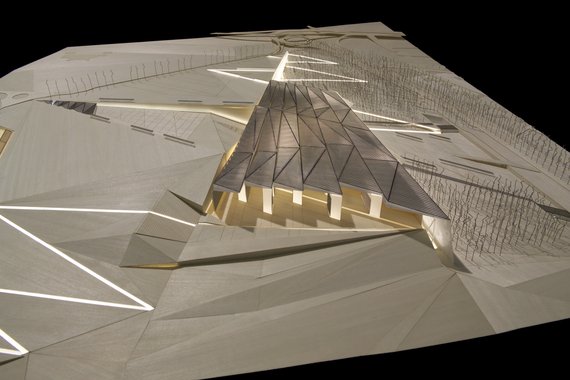
An Ode to Natural Illumination
At the edge of the desert, just over a mile from the Pyramids of Giza, stands the Grand Egyptian Museum (GEM) — the world’s largest museum dedicated to a single civilization.
With its official opening on November 1, 2025, the GEM marks a historic milestone in contemporary museum architecture, merging heritage, technology, and sustainability in a constant dialogue with the sun and the surrounding landscape.
A Project Born from the Landscape
Designed by Heneghan Peng Architects, who won Egypt’s largest-ever architectural competition in 2003, the museum extends across a plateau once sculpted by the Nile thousands of years ago.
The building, conceived as a monumental six-level chronological staircase, accompanies visitors through Egyptian history — from the Predynastic period to the Coptic era — culminating in a panoramic view of the Pyramids of Giza, visually integrated into the museum experience.
The entire structure aligns with the visual axes of the pyramids, fusing geometry and symbolism, past and present.
Architecture of Light and Matter
Its triangular stone façade references the pyramids while controlling solar radiation and thermal gain.
Here, the true protagonist is natural light — not simply as illumination, but as a living design element.
The museum treats daylight as part of the storytelling: calibrated, tangible, and poetic. Roof folds and skylights diffuse sunlight deep into the spaces, creating luminous atmospheres that remain thermally balanced and museum-safe.
Light as a Design Tool
Lighting design was led by Bartenbach, the Austrian firm known for pioneering research on human-centered lighting and for developing an advanced artificial sky to simulate solar and sky conditions.
Their expertise shaped a seamless balance between natural and artificial light — a sensory narrative that leads visitors across more than 100,000 artifacts while erasing any visible trace of technology.
In collaboration with Atelier Brückner (exhibition design) and the architects, Bartenbach devised a true drama of light that guides both emotion and perception.
Sustainability and Energy Control
Massive concrete structures stabilize the indoor climate, reducing the need for active air conditioning.
A sophisticated integrated management system precisely controls the interaction between daylight and artificial lighting, optimizing both comfort and energy efficiency.
The building operates primarily as a passive system, drawing from natural resources — light, heat, and ventilation — and turning sustainability into a form of architectural expression.
The Sun as Creator and Symbol
The relationship between the museum and the sun is as symbolic as it is functional.
Since the dawn of pharaonic civilization, the sun — embodied by the god Ra — has been the source of life and divine power.
One of the pharaoh’s solar boats, 43 meters long and rebuilt from over 1,200 fragments, is displayed at the GEM, celebrating the cosmic connection between sun and sovereignty.
Twice a year, the rising sun illuminates the face of Ramses II inside the Grand Hall, a modern echo of the Abu Simbel phenomenon, transforming solar alignment into sacred spectacle.
Engineering, Perception, and Vision
The GEM stands at the intersection of engineering, optical physics, and architectural storytelling — an equilibrium where scientific precision and poetic light combine to create an experience of both knowledge and wonder.
Heneghan Peng Architects
An architecture studio based in Dublin, founded in 1999 by Róisín Heneghan and Shih-Fu Peng. Their work stands out for its rigorous and contextual approach, balancing contemporary form with a strong awareness of place and memory. Among their most renowned projects are the Grand Egyptian Museum in Cairo and the redevelopment of the Giant’s Causeway Visitor Centre in Northern Ireland.
Bartenbach Lichtlabor
An Austrian company and laboratory specializing in the research and design of natural and artificial light, founded by Christian Bartenbach, a pioneer of European lighting design. The studio combines scientific precision with human perception to create spaces that enhance well-being and architectural clarity. It has been involved in major international museum and infrastructure projects.
Atelier Brückner
A multidisciplinary design studio based in Stuttgart, known for creating narrative and immersive exhibition environments. Founded in 1997 by Uwe R. Brückner, it integrates architecture, scenography, and visual communication to turn exhibitions into spatial storytelling experiences. Its works include the Mercedes-Benz Museum and the exhibition design for the German Pavilion at Expo.
Media
-
 no description available
(1.0 MB).
no description available
(1.0 MB).
-
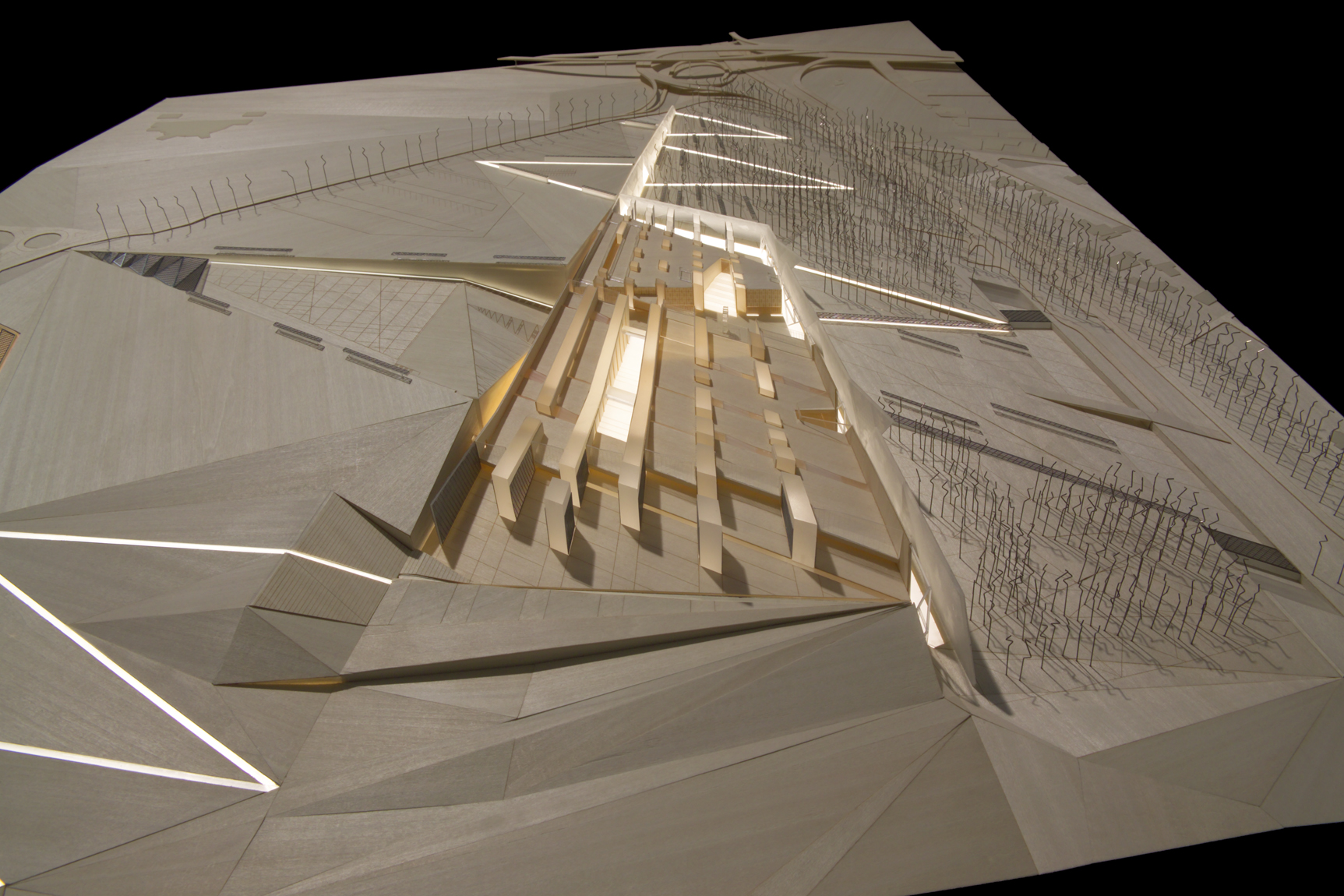 no description available
(1.1 MB).
no description available
(1.1 MB).
-
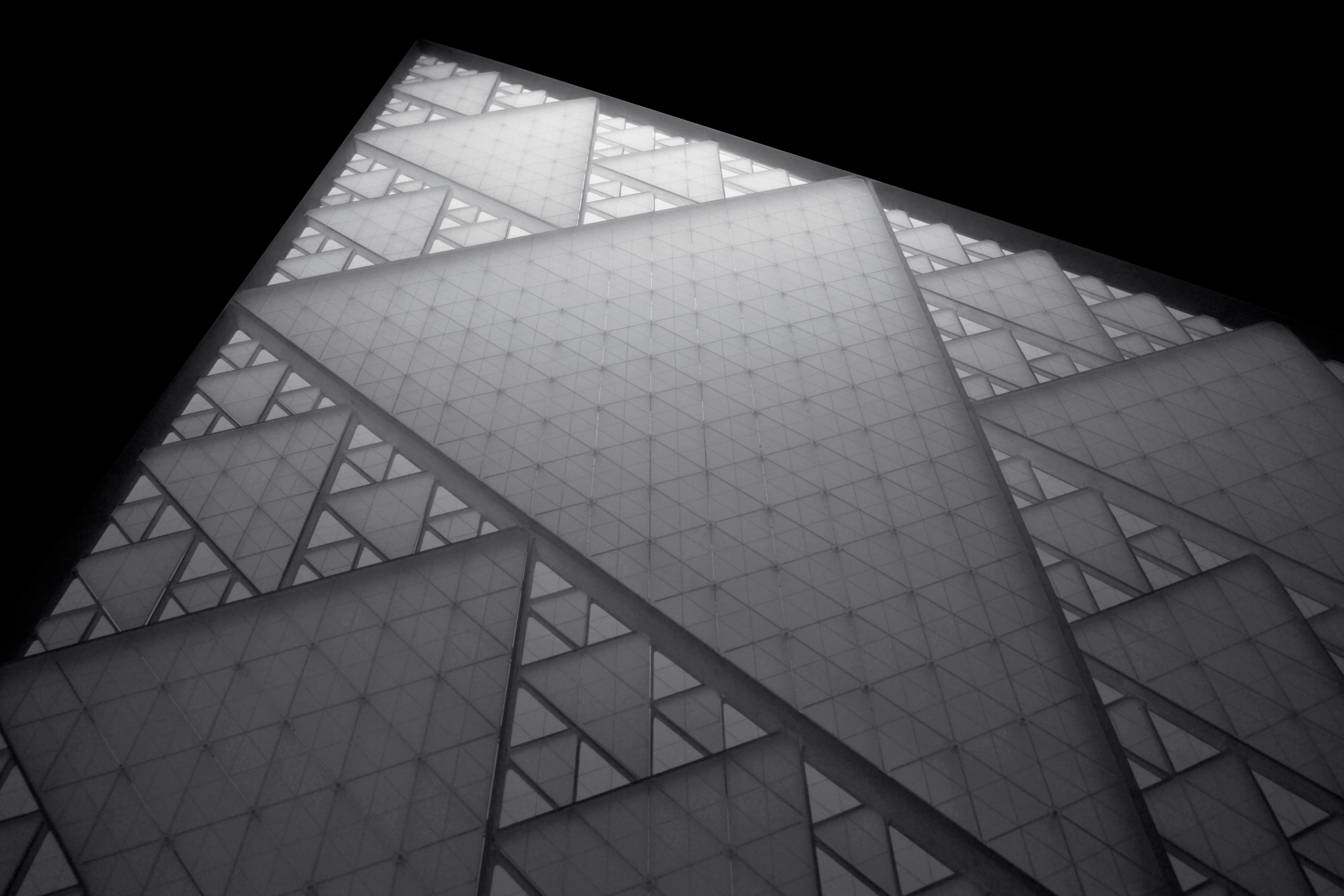 Roof scale model
(790.8 KB).
Roof scale model
(790.8 KB).
-
 A scale model of the Grand Egyptian Museum (GEM) represents the vast architectural complex currently under development on the Giza Plateau, near the Pyramids of Khufu, Khafre, and Menkaure.
(135.2 KB).
A scale model of the Grand Egyptian Museum (GEM) represents the vast architectural complex currently under development on the Giza Plateau, near the Pyramids of Khufu, Khafre, and Menkaure.
(135.2 KB).
-
 A series of preliminary drawings and notes exploring the integration of natural and artificial light within the museum’s exhibition spaces. The sketches reflect the search for a balance between function, atmosphere, and perception, with careful attention to lighting intensity and the enhancement of material qualities.
(180.6 KB).
A series of preliminary drawings and notes exploring the integration of natural and artificial light within the museum’s exhibition spaces. The sketches reflect the search for a balance between function, atmosphere, and perception, with careful attention to lighting intensity and the enhancement of material qualities.
(180.6 KB).
-
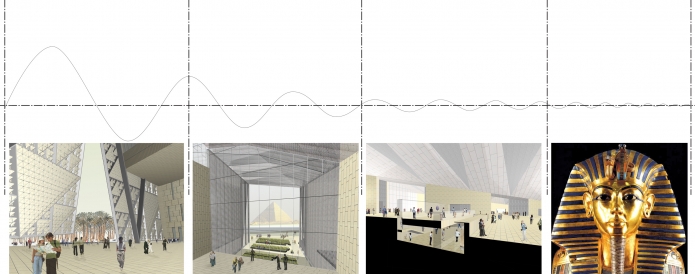 A study document outlining the conceptual guidelines for the museum’s visitor route, from spatial sequencing to the organization of circulation flows. The project investigates the relationship between exhibition spaces, light, and perception, placing the visitor’s experience at the core.
Through diagrams, layouts, and reference models, it tests different levels of interaction between architecture and exhibition narrative, anticipating the museum’s role as a space for knowledge and engagement.
(122.8 KB).
A study document outlining the conceptual guidelines for the museum’s visitor route, from spatial sequencing to the organization of circulation flows. The project investigates the relationship between exhibition spaces, light, and perception, placing the visitor’s experience at the core.
Through diagrams, layouts, and reference models, it tests different levels of interaction between architecture and exhibition narrative, anticipating the museum’s role as a space for knowledge and engagement.
(122.8 KB).
-
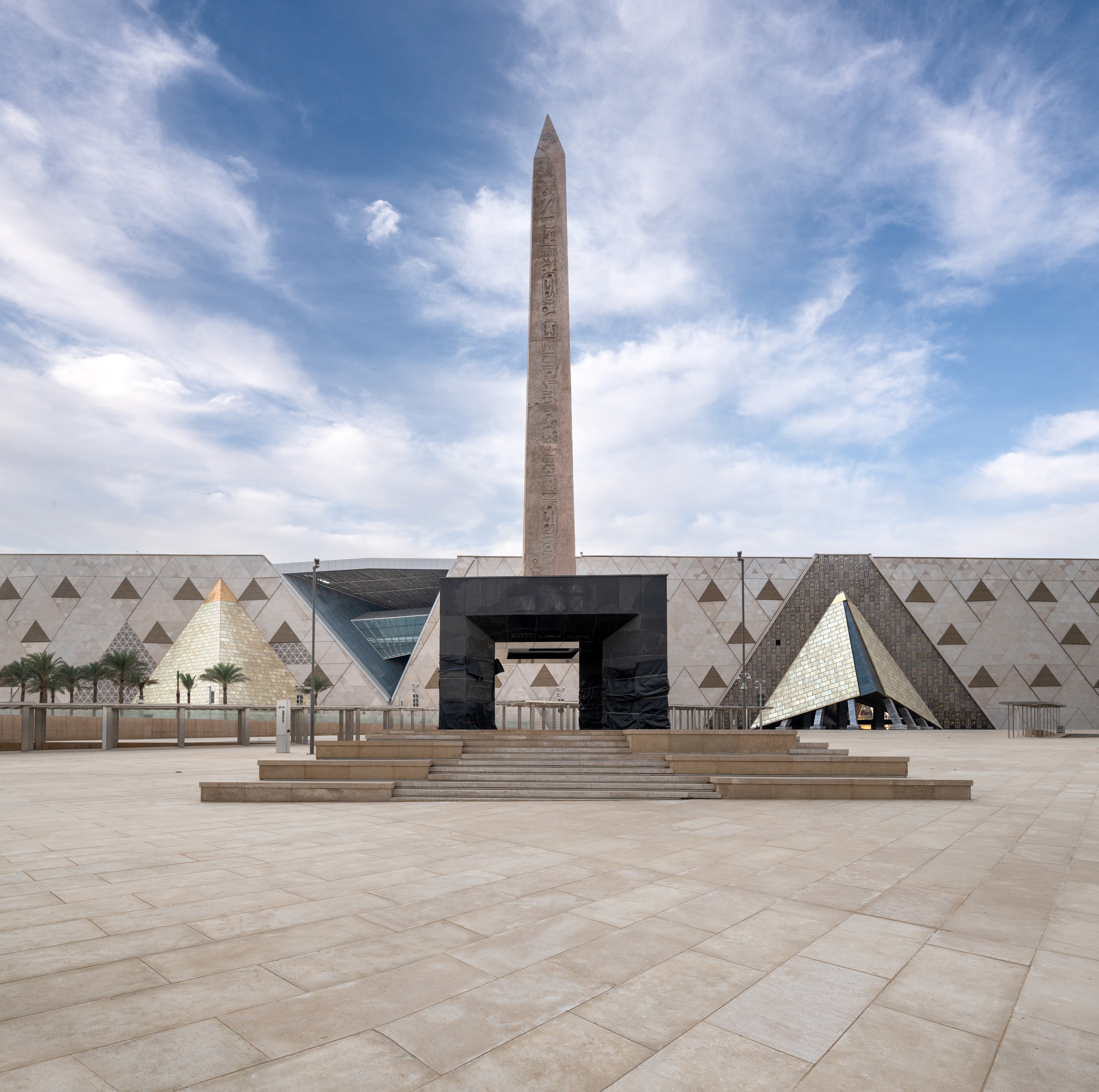 The stepped façade clad in translucent alabaster panels referencing Egypt’s traditional materials.
(3.1 MB).
The stepped façade clad in translucent alabaster panels referencing Egypt’s traditional materials.
(3.1 MB).
-
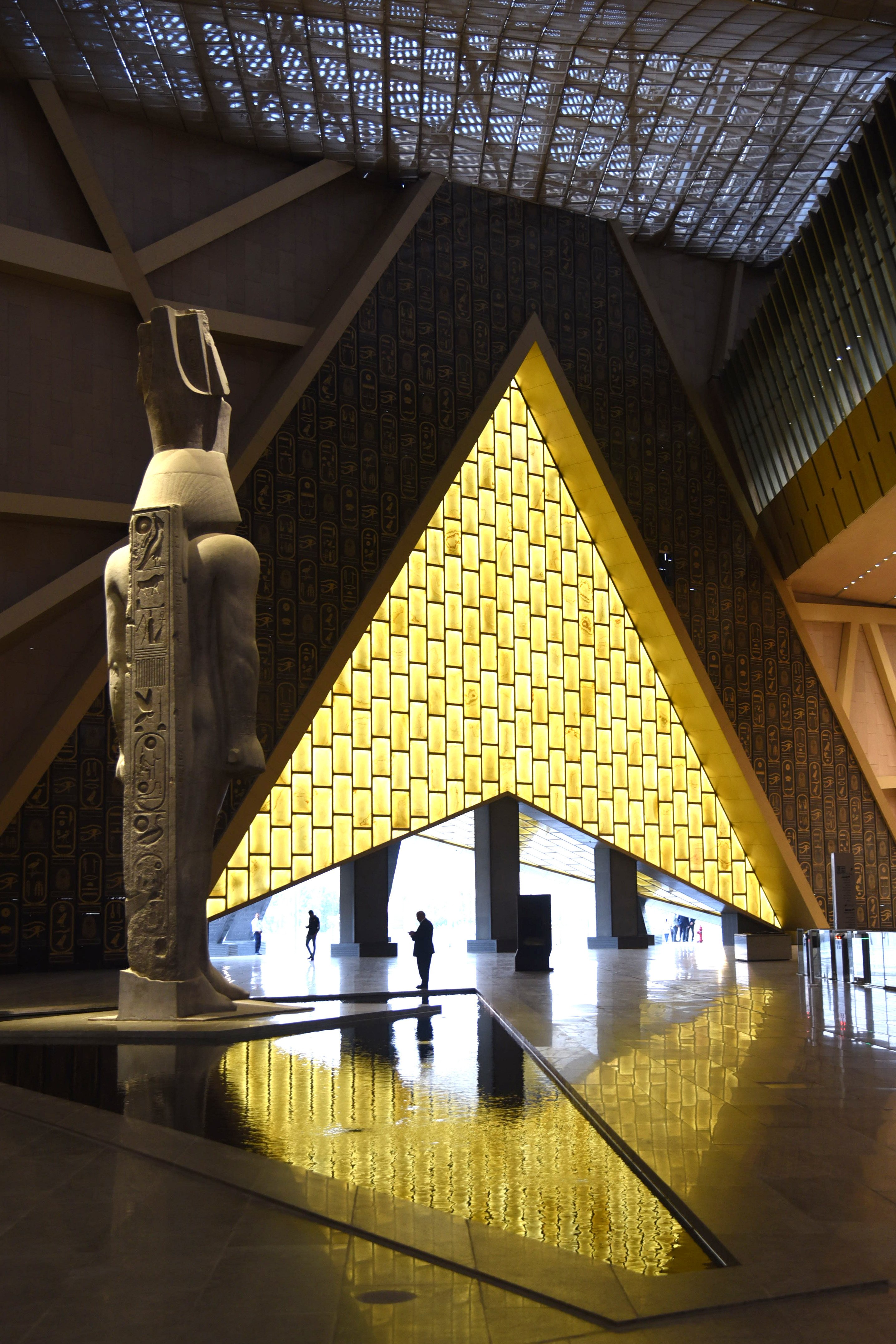 The museum’s monumental entrance atrium unfolds as a transitional space between the desert light and the built interior. At midday, sunlight filters through translucent surfaces and reflects across the floor, creating a dynamic play of golden tones that shifts throughout the day.
This carefully designed effect establishes a symbolic dialogue between the Egyptian sun and the architectural materiality, turning the atrium into a space of welcome and contemplation.
(1.7 MB).
The museum’s monumental entrance atrium unfolds as a transitional space between the desert light and the built interior. At midday, sunlight filters through translucent surfaces and reflects across the floor, creating a dynamic play of golden tones that shifts throughout the day.
This carefully designed effect establishes a symbolic dialogue between the Egyptian sun and the architectural materiality, turning the atrium into a space of welcome and contemplation.
(1.7 MB).
-
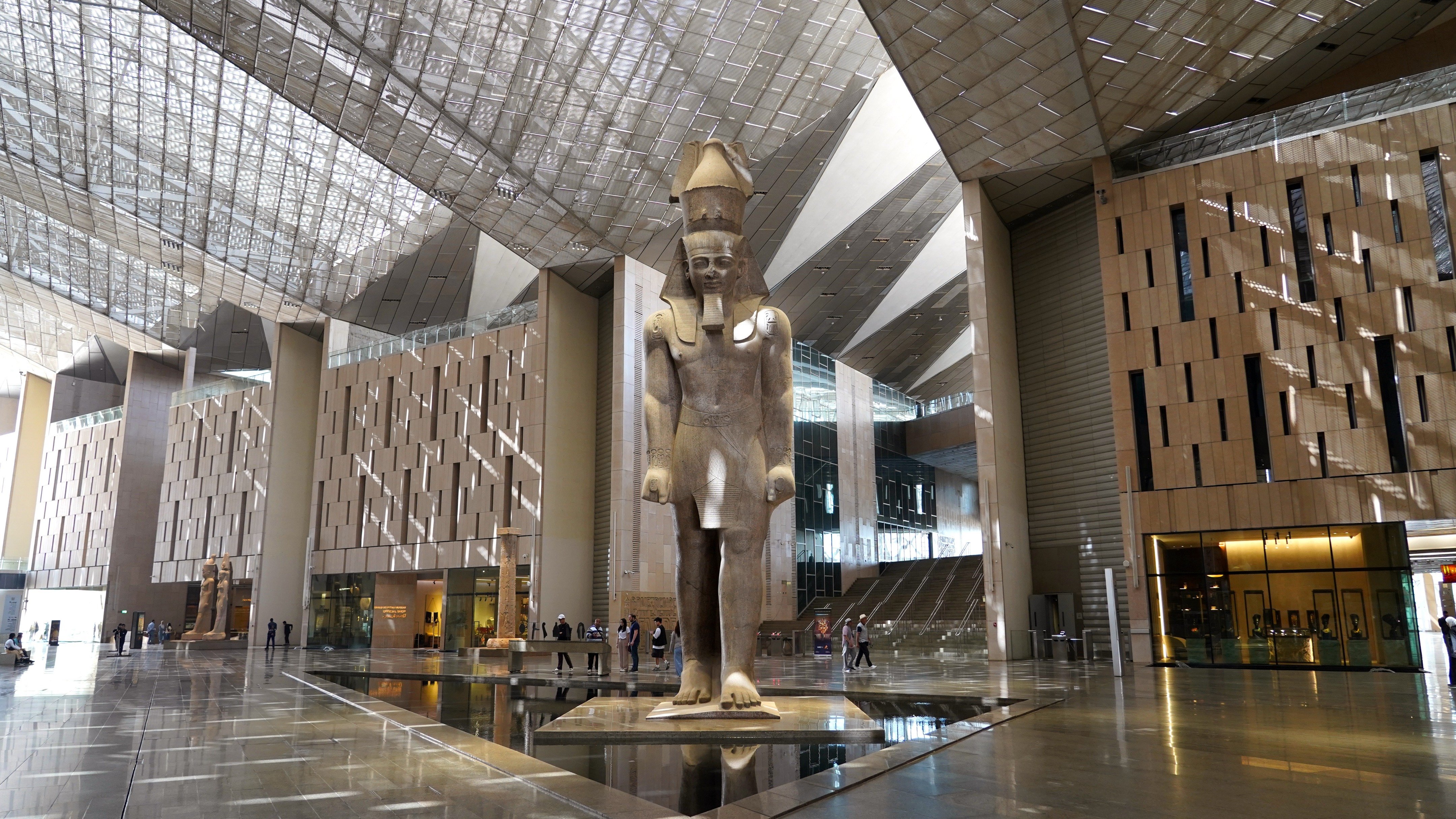 The internal galleries organized along a central spine.
(2.4 MB).
The internal galleries organized along a central spine.
(2.4 MB).
-
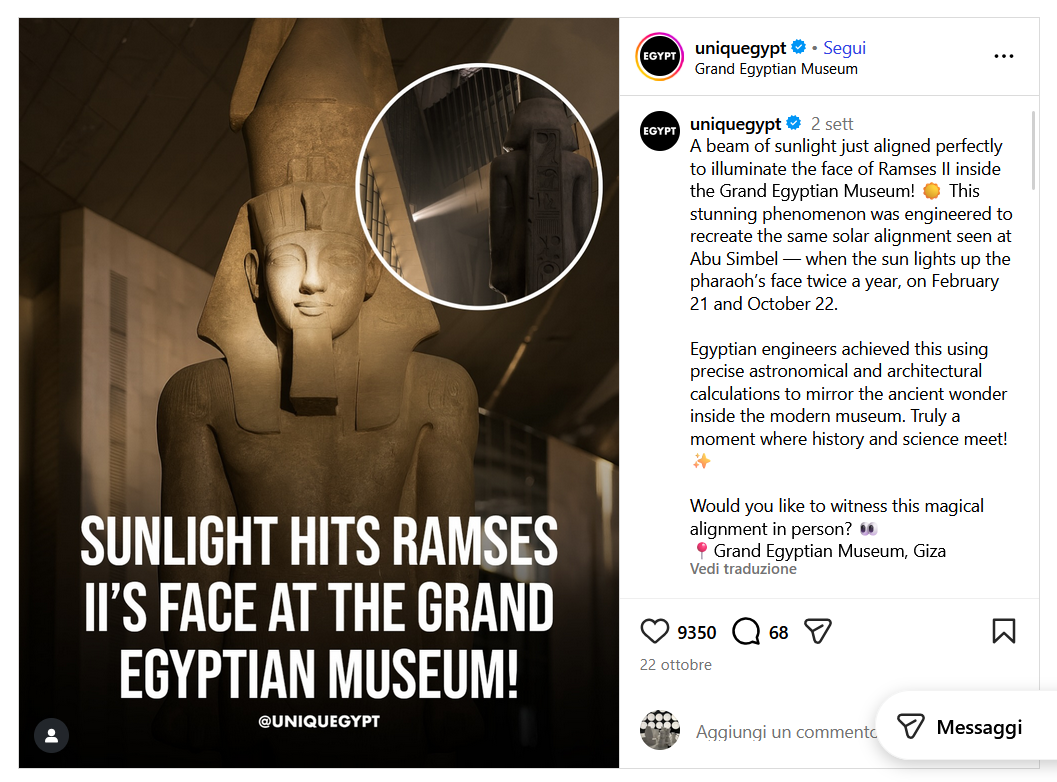 no description available
(809.5 KB).
no description available
(809.5 KB).
-
 no description available
(394.8 KB).
no description available
(394.8 KB).
-
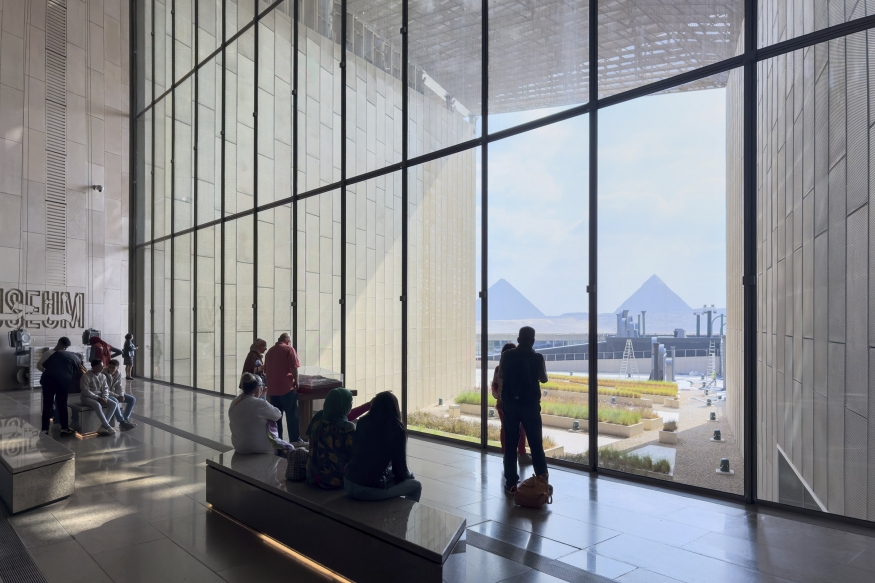 no description available
(355.7 KB).
no description available
(355.7 KB).
-
 no description available
(809.8 KB).
no description available
(809.8 KB).
-
 no description available
(3.0 MB).
no description available
(3.0 MB).
-
 no description available
(2.9 MB).
no description available
(2.9 MB).
Contact
betanit.com
Phone: +39 0523 650217
email: info@betanit.com